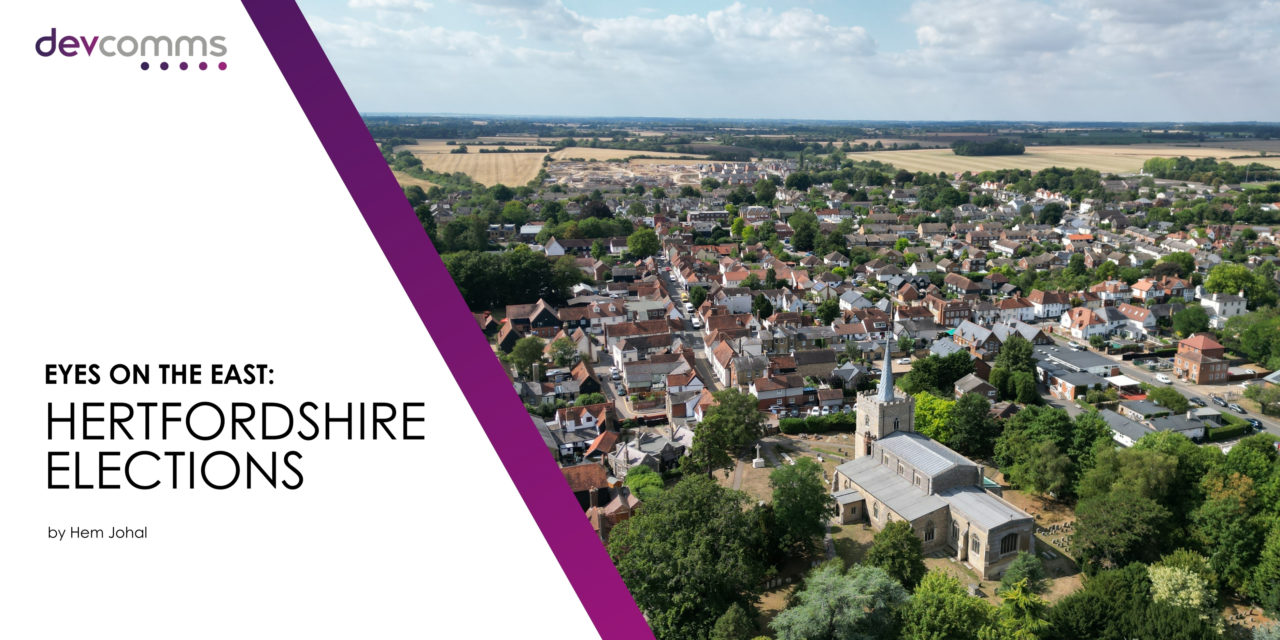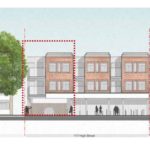In the fifth and final DevComms report on the key election battlegrounds across the East of England, account manager Hem Johal puts Hertfordshire under the spotlight and examines how much the county could change political colour.
Hertfordshire’s constituencies have been dominated by the Conservatives in recent years.
However, in the upcoming election, both the Liberal Democrats and Labour Party will be looking to target some key seats, in a bid to take advantage of the perceived national weakness of the Conservatives nationally and new seat boundary changes. Top of Form
In what promises to be a significant shakeup, North East Hertfordshire faces the prospect of a new political era as long-standing Conservative MP Oliver Heald, steps down after 32 years of service.
With a Conservative majority of over 18,000, the constituency has been a stronghold for the party since its inception. However, recent polling data indicates a potential upset, with Labour emerging as formidable contenders poised to overturn decades of Tory dominance. The impending departure of Heald has set the stage for a keenly anticipated battle, yet to be fully defined by the announcement of Labour’s candidate.
North Hertfordshire District Council was under Conservative control from 1992 until 2023. However, it now finds itself under the leadership of a Labour-Liberal Democrat coalition. This power shift underscores the evolving dynamics of local politics, setting the stage for a potential change in parliamentary representation.
In St Albans, the Liberal Democrats will seek to solidify their position amidst Conservative aims for resurgence. Daisy Cooper MP gained a 6,000-vote majority in 2019. The Liberal Democrats will have confidence given their success in the St Albans City and district council elections, and the Conservatives’ relative weakness, as they held 23 seats in 2019, and currently hold just four.
The Local Plan is a very topical issue in St Albans local politics. St Albans City and District Council has received a ‘designation notice’ in relation to decision making for non-major planning applications and is under close scrutiny by Michael Gove over the timetable of the Local Plan, the city having one of the oldest plans in the country at present.
Welwyn Hatfield emerges as another focal point in the electoral landscape, poised for a closely contested showdown between Labour and the Conservatives. The outcome of this battle remains uncertain, reflective of the broader political volatility characterising contemporary British politics.
In the broader context of Hertfordshire politics, overarching themes resonate across both local and national platforms, notably the preservation of the Green Belt. This shared concern underscores the interconnectedness of local and national issues, shaping the discourse and priorities of electoral contenders.
Overall, Hertfordshire is likely to stay largely blue, however there are likely to be some key battlegrounds, where they may lose some seats in line with national predictions.
Follow these links to the previous articles in this series:
Eyes on the East: crossing borders, shaping futures – the political landscape of Suffolk
Eyes on the East: Ely and East Cambridgeshire – a Lib Dem win?
Eyes on the East: Norfolk’s political battlegrounds
Eyes on the East: The Only Way is Tory in Essex – will it still be in 2024?
© Eastern Echo (powered by ukpropertyforums.com).
Sign up to receive our weekly free journal, The Forum here.





































